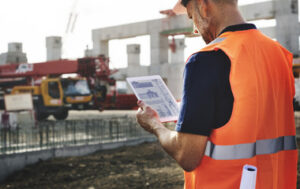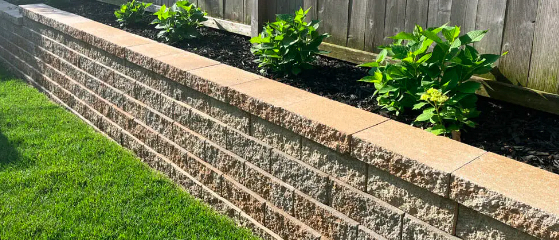The Latest Trends And Innovations In Concrete Construction And Design
Concrete innovations continue to transform the industry. These advancements can help producers create efficiencies, drive productivity and profitability, meet sustainability mandates, and more.
For example, scientists have developed a self-healing concrete that contains bacteria that produce limestone when it comes into contact with water and air, sealing cracks. This is being used in new mixtures and as a repair mortar for existing structures. To learn more, click here at https://concretecontractorcoloradosprings.com/.
 Off-Site Construction
Off-Site Construction
Concrete is an age-old construction material that is both versatile and durable, but it can also feel distinctly modern when used in modern design. Whether used to create modern buildings or other things, concrete is an enduring classic that’s continuously inspiring new designs.
To keep up with the trends, contractors must utilize advanced technology that allows them to work more quickly and efficiently. Some of these technologies include drones, virtual reality, and 3D printing. These tools help with everything from capturing high-resolution site photos to discovering safety issues and estimating quantities of materials on site. They can also help with planning and coordination with the field crew, making it easier to communicate how a building is evolving from start to finish.
One of the latest innovations in concrete construction is off-site construction, a process that involves the fabrication, design, and assembly of different elements at a location other than the final installed location. This can take many forms, including modularization, prefabrication, and offsite multi-trade fabrication. Offsite construction is gaining popularity because of its efficiency, sustainability, and ease of installation. It can also reduce costs and save time by reducing the number of on-site activities required.
Another benefit of offsite construction is its ability to provide a safe and healthy working environment for workers on the job site. It helps to alleviate the problem of finding skilled laborers, as well as the stress that comes with working in harsh environments or remote locations. Moreover, offsite construction reduces the risk of infection by ensuring that workers wear masks and practice cleanliness protocols.
Other advancements in the offsite construction industry include ultra-high-performance concrete (UHPC). This new type of concrete can be built at a much quicker rate than traditional concrete, and it can withstand more extreme weather conditions. It is also less prone to cracking and has a longer lifespan than traditional concrete. Additionally, UHPC requires less energy to produce and has a lower environmental impact. This trend is expected to continue as developers search for ways to reduce costs and improve productivity on construction sites.
Drones
Concrete is widely used across the world due to its strength, versatility, and cost-effectiveness. The concrete industry is continuously innovating to expand the material’s use to meet the challenges of contemporary construction and society. Innovations include new mix designs with the addition of alternative constituent materials to alter and improve its performance and sustainability credentials.
One of the latest trends and innovations in concrete construction is the use of drones. These drones allow for easier and faster surveying of sites, resulting in quicker completion times and a reduction in excruciating project delays. Moreover, the use of drones helps to optimize design and layouts, while reducing waste.
Despite initial reluctance, companies in the construction sector have benefited greatly from the use of drones on building sites. The drones are mainly used for airborne surveys and inspection, giving concrete professionals a bird’s eye view of the site, which can help them spot issues that may arise during the construction process. Additionally, they also help to ensure the on-time completion of projects through digital optimization.
Other exciting developments in the concrete industry include new types of concrete that can be printed with patterns, information displays, and even self-cleaning properties. Translucent concrete, for example, is being used to decorate the interior and exterior walls of buildings and can be seen in staircases and dividing walls. The material uses wire heating technology and thermochromatic pigment to change color, allowing designers to create dynamic patterns that display numbers and text like a dot-matrix clock.
Another innovative material is pervious concrete, which allows rainwater to flow through and drain into the soil beneath. This technology is particularly useful for areas with heavy traffic, as it reduces stormwater runoff and pollution.
The concrete industry has also come up with several ways to make its products more eco-friendly, including incorporating recycled aggregates and reducing its carbon footprint. One of the most exciting examples is a new type of concrete made with magnesium sulfate, which eliminates the need for cement, reduces sulfur dioxide emissions, and may even absorb carbon dioxide as it hardens.
Artificial Intelligence
Technology plays a significant role in every industry, including concrete construction. Concrete contractors and construction companies are constantly seeking newer technology to improve efficiency and quality on the job site, as well as reduce cost. There are numerous emerging trends and innovations in concrete construction and design that have the potential to make a huge impact on the industry in the years to come.
Artificial intelligence can be used to automate tasks on the job site and improve quality control. It can also be used to predict the mechanical properties of concrete, saving time and resources. Supervised methods can predict concrete performance better than traditional statistical methods. However, many factors affect the prediction accuracy of concrete flexural strength. Several studies have investigated how the model prediction accuracy is affected by algorithm selection, sample data, and model construction. Generally, ensemble modeling performed better than individual decision tree models.
Another innovation in concrete is flexible concrete, which is designed to expand and contract when stressed. This type of concrete can be used in bridge decks, pavements, and runways. It can also be used in buildings to help absorb vibrations and noise.
A third innovation in concrete is smart concrete, which contains sensors and GPS trackers to enhance safety and boost productivity. The sensors can monitor and record the location of equipment, as well as alert field personnel to any dangerous conditions that might arise on the job site. This information is then sent to a central computer system that can provide recommendations and suggestions.
Decorative concrete is another trend that is becoming more popular. This concrete is cast into forms with a variety of textures, colors, and patterns to suit any interior or exterior design style. It can be used to create a modern farmhouse look, as well as to enhance patios, walkways, and curbing. This type of concrete is made using a combination of recycled and new materials, making it an environmentally friendly option for any project. This concrete can be illuminated with fiber optics to create beautiful lighting effects for pathways, streets, and buildings.
Wearable Technology
Concrete has long been one of the most utilitarian construction materials around. It’s durable, affordable, and incredibly versatile, giving designers and architects endless opportunities for innovation. However, with rising construction costs and a shortage of skilled workers, contractors are increasingly turning to technology to reduce their operating expenses.
New concrete technology is bringing a fresh look to an old material, while also cutting costs and increasing efficiency on the job site. For example, GPS trackers keep foremen in the know about where their cement trucks are at all times, allowing them to plan and work around delays with ease. Meanwhile, battery-powered tools like concrete saws and hammer drills help reduce the amount of gas burned on site and also save contractors money by not having to pay for the expensive gasoline that traditional power tools require.
Innovative new concrete blends are available with varying textures and finishes, from smooth to coarse, that can be stained or colored to achieve desired aesthetics. And thanks to advances in 3D printing, it’s possible to create complex concrete structures with greater speed and accuracy than ever before.
Another emerging concrete trend is sustainability, with clients demanding more climate-friendly building materials and specifications. Companies have responded by introducing a translucent concrete called Luccon, which allows natural light to pass through the concrete without losing its strength.
Another growing trend is pairing concrete with other organic materials, such as wood, to make a strong and durable structure while saving time and resources. For instance, a company has developed a system that uses glass fiber-reinforced concrete panels alongside cross-laminated timber (CLT) to make a structural solution that’s resource-efficient, time-saving, and ecological for both the people and the environment on the construction site.

